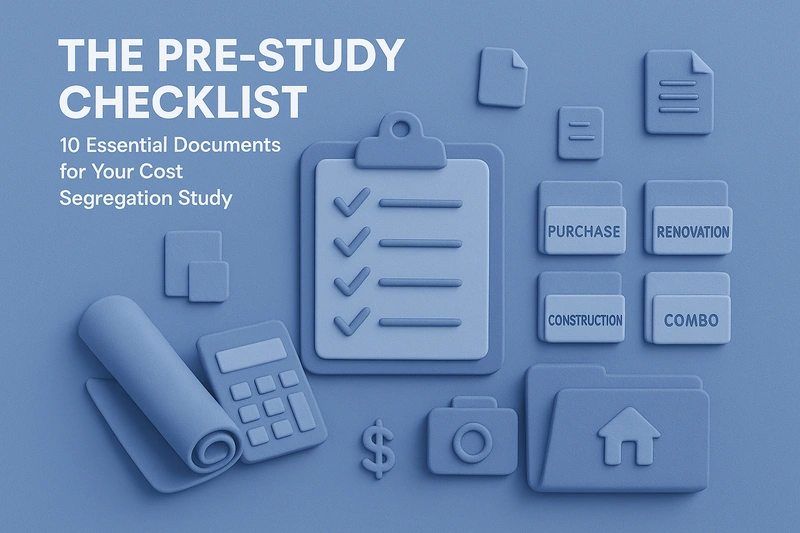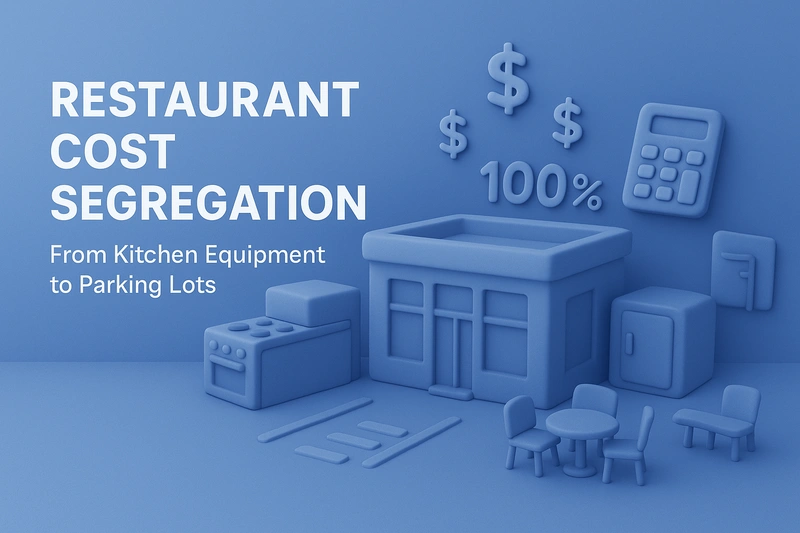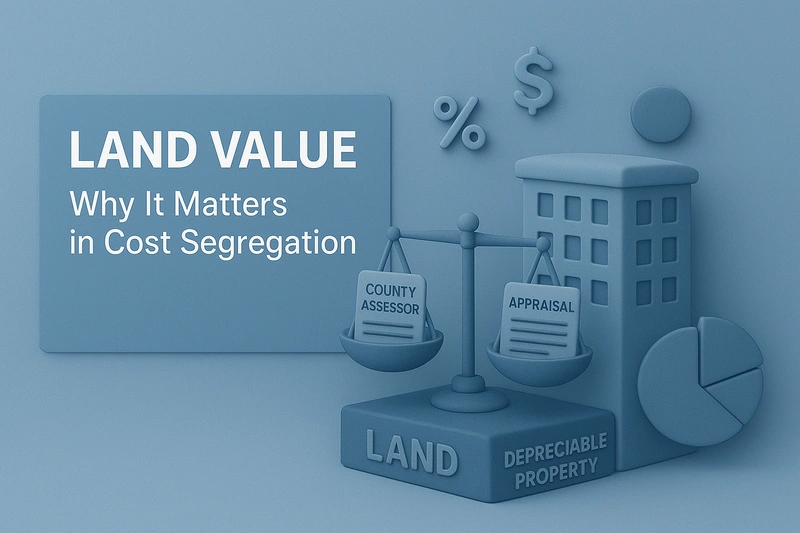Proper document preparation before your cost segregation study can mean the difference between maximizing your depreciation deductions by 20-40% or leaving thousands on the table. When R.E. Cost Seg begins analyzing your property, having the right documentation ready accelerates the study process, improves accuracy, and ensures IRS compliance.
Every hour you spend organizing documents saves three hours during the actual study. More importantly, complete documentation packages identify 30% more qualifying assets for accelerated depreciation. This preparation advantage translates directly into cash flow through reduced tax liability.
This comprehensive pre-study checklist eliminates guesswork from your cost segregation preparation. The documents you need vary based on your specific situation: whether you purchased without renovations, purchased and renovated, constructed new, or only completed renovations. This guide ensures you gather exactly what's required for your property type.
Core Purchase & Ownership Documents
Document #1: Closing (Settlement) Statement
Your closing statement forms the foundation of cost segregation studies for acquired properties. This document establishes your total acquisition cost and provides the baseline for depreciation calculations. R.E. Cost Seg requires this document when you've purchased a property, whether or not you've made renovations.
Include your HUD-1 Settlement Statement or Closing Disclosure showing the complete purchase price breakdown. These documents itemize closing costs, identify personal property transfers, and separate land value from building value. This separation is critical since land cannot be depreciated while buildings and improvements can.
Important Note: If you constructed the property yourself or are only documenting renovations without a purchase, this document isn't needed.
What if I don't have my original closing documents?
Contact your title company or closing attorney immediately. Most maintain records for at least seven years per IRS requirements. If these sources fail, your mortgage lender should have copies. As a last resort, bank statements and canceled checks can help reconstruct costs, though R.E. Cost Seg will need additional documentation to support these figures for IRS compliance.
Document #2: Depreciation Schedule
Your existing depreciation schedule is only required when you've previously filed taxes for the property. This form is usually included in your tax schedule, and your CPA should be able to help locate it. It contains details like building value, land value, and prior depreciation.
R.E. Cost Seg needs this if your placed-in-service date is before the current tax year. This document establishes your current tax position and ensures the cost segregation study aligns with prior filings.
For properties purchased and renovated, or renovations only, this document is essential. New construction projects don't require depreciation schedules since no prior depreciation exists. The schedule helps identify opportunities to accelerate depreciation through Form 3115 when changing from straight-line to cost segregation methodology.
Warning: Inconsistencies between your cost segregation study and existing depreciation schedules trigger IRS scrutiny. Ensure all prior depreciation taken aligns with the new study results.
Construction & Renovation Documentation
Document #3: Construction Costs
Construction cost documentation requirements vary significantly based on your project type. For purchased properties without renovations, these aren't needed. However, for any renovation or construction project, R.E. Cost Seg requires approved construction costs.
Acceptable construction cost documentation includes:
- Final payment applications (AIA G-702 and G-703 forms)
- Detailed invoices with change orders
- Comprehensive cost ledger showing all costs and the scope of work
These documents provide the detailed cost breakdown essential for identifying assets that qualify for accelerated depreciation. The line-item detail in payment applications often reveals personal property and specialized systems eligible for bonus depreciation.
What if I don't have detailed construction cost breakdowns?
R.E. Cost Seg provides a construction cost template Excel file for properties lacking standard documentation. This template helps organize costs by trade and component, ensuring proper asset classification for depreciation purposes.
Document #4: Construction Plans
Construction plans serve different roles depending on your property situation. For new construction, these are required documents. They're optional but highly beneficial for renovations and purchased properties with improvements. Properties purchased without modifications don't need construction plans.
Essential construction plan components:
- Civil plans and site plans showing land improvements
- Structural plans and elevations
- MEP (Mechanical, Electrical, Plumbing) plans
These technical drawings allow R.E. Cost Seg to distinguish between structural components (39-year property) and personal property (5 or 7-year property). MEP plans particularly help identify specialized systems qualifying for shorter depreciation periods.
How detailed do construction plans need to be?
Professional architectural drawings with dimensions and specifications provide the best support. While optional for renovations, having these plans typically increases the identified 5 and 7-year property by 15-20%.
Property-Specific Documentation
Document #5: Property Appraisal
Property appraisals are optional across all property types, but provide valuable support for land value allocation. Since land cannot be depreciated, accurate valuation directly impacts your depreciable basis. Professional appraisals using comparable sales data provide defensible support for maximizing your building allocation while maintaining IRS compliance.
When should I provide an appraisal?
Consider providing an appraisal when land value represents more than 20% of total property value, or when the IRS might question your allocation. High-value properties and those in prime locations benefit most from appraisal documentation.
Document #6: Site Survey
Site surveys are optional but particularly helpful for large properties. They provide precise property boundaries, easements, and topographical information that assist in identifying and valuing land improvements. The survey helps distinguish between depreciable improvements and non-depreciable land.
Note: Site surveys are not requested for condominium units of any type, as individual unit owners don't own the land.
For new construction projects, site information is typically included in the construction plans, making separate surveys unnecessary.
Document #7: Condo Documents and CC&Rs
For condominium units, these documents are required when purchasing or purchasing with renovations. Covenants, Conditions, and Restrictions (CC&Rs) define what portions of the property you own versus common areas. This distinction affects your depreciable basis and what improvements you can claim.
Townhouses may also have CC&Rs that impact depreciation calculations. These documents help R.E. Cost Seg properly allocate costs between individual unit improvements and common area assessments.
Why do condo documents matter for cost segregation?
CC&Rs determine ownership boundaries and improvement rights. They clarify which building components you can depreciate versus those owned by the homeowners association.
Supporting Documentation
Document #8: Photos and Videos
Visual documentation is optional but valuable for all property types. Photos and videos support cost allocations and verify asset installations. R.E. Cost Seg uses these to confirm property conditions and improvement details without requiring site visits in many cases.
Recommended visual documentation:
- Pre-renovation photos showing original conditions
- Construction progress photos
- Current property conditions
- Video walkthroughs highlighting specialty systems
Time-stamped photos provide particularly strong support for renovation timelines and placed-in-service dates.
Document #9: Rent Roll or Unit Mix
For income-producing properties, rent rolls and unit mix information are optional but helpful. Mixed-use properties require this data to determine proper recovery periods, as residential versus commercial use affects depreciation schedules.
Property types benefiting from rent roll documentation:
- Mixed-use apartment and commercial properties
- Hotels, motels, and resorts
- Multi-family residential complexes
- Self-storage facilities
The unit mix helps determine square footage allocations and counts of each unique unit type, supporting more accurate cost segregation.
Documentation Requirements by Scenario
Quick Reference Guide
Understanding which documents you need depends on your specific situation. R.E. Cost Seg tailors requirements based on four common scenarios:
Purchased Property (No Renovations):
- Required: Closing statement, Depreciation schedule (if previously filed)
- Optional: Appraisal, Site survey, Photos, Rent roll
- Not needed: Construction costs, Construction plans
Purchased and Renovated:
- Required: Closing statement, Depreciation schedule, Construction costs
- Optional: Construction plans, Appraisal, Site survey, Photos, Rent roll
- Condo properties also need: CC&Rs
New Construction:
- Required: Construction costs, Construction plans
- Optional: Appraisal, Photos, Rent roll, CC&Rs
- Not needed: Closing statement, Prior depreciation schedules
Renovations Only:
- Required: Construction costs
- Optional: Construction plans, Site survey, Photos, Rent roll, CC&Rs
- Not needed: Closing statement, Prior depreciation schedules
Digital Organization Best Practices
Digital organization accelerates your cost segregation study and reduces costs. R.E. Cost Seg recommends creating a cloud-based folder structure organized by document type. Use clear naming conventions that include dates and descriptions for easy retrieval.
Document Quality Standards:
- Format: PDF preferred for all submissions
- Resolution: Minimum 300 DPI for scanned documents
- File size: Under 25MB per document for easy sharing
- Organization: Separate folders for each document category
Common Documentation Pitfalls
Incomplete documentation undermines your cost segregation study and invites IRS scrutiny. Avoid these common mistakes:
Missing required documents for your property type delays the study start. Providing unnecessary documents creates confusion and increases review time. Inconsistent cost information between documents raises red flags.
IRS Audit Protection: Proper documentation reduces audit risk by 75%. Maintain all records for seven years minimum. Digital organization saves 50% of audit response time.
Special Considerations
Do I need different documents for a retroactive study?
Retroactive studies using Form 3115 require the same documentation based on your property scenario, plus historical placed-in-service dates. R.E. Cost Seg helps reconstruct missing historical documentation when needed.
What about properties acquired through 1031 exchanges?
Document both relinquished and replacement properties. Include the qualified intermediary's settlement statements showing basis carryover. Previous depreciation schedules and any recapture from the relinquished property affect your replacement property's cost segregation potential.
Proper documentation transforms your cost segregation study from a tax concept into substantial cash flow. Understanding exactly which documents you need, based on whether you purchased, constructed, or renovated, ensures efficient study completion and maximum tax benefits.
Every hour spent organizing the right documents saves three hours during your study. Complete, accurate documentation packages identify 30% more qualifying assets for accelerated depreciation.






